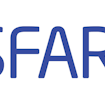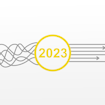
©iStock.com/chatchaisurakram
Today we’re announcing our annual request for applications (RFA) for the SFARI Pilot and Research Awards. Letters of intent (LOIs), the short statements that precede full applications, are due no later than 9 December 2016.
With this blog we hope to give insight into SFARI’s scientific priorities and considerations regarding experimental design. To learn more about SFARI’s review process, please read the accompanying blog post, “2017 Pilot and Research Award RFA: The review process.”
SFARI’s scientific priorities
The issues in autism research are complex, and deciding which of the proposals that we receive are highest priority to fund in light of our mission (i.e., “to improve the understanding, diagnosis and treatment of autism spectrum disorders by funding innovative research of the highest quality and relevance”) is one of our greatest challenges. We do not encourage applications that are not related to this mission.
Our goal with our annual open RFA is to cast a wide net for the best new ideas — many of which we cannot anticipate and are often made possible by emerging new technologies. Hence, we cannot simply provide a list of the types of grants we are looking for. There are a few general guidelines that have emerged from SFARI’s previous grant review panels and other discussions. Broadly speaking, given recent advances, the time seems ripe to bridge different levels of understanding to advance a more coherent picture of autism. This will involve connecting insights from genes to neural circuits to behavior, so we especially encourage grants with this broad outlook.
We strongly recommend that as a first step when preparing a proposal, you familiarize yourself with SFARI’s current and past grant portfolios and past targeted RFAs, as well as SFARI-generated resources. We hope this helps you to think about how your work might complement, but not duplicate, existing efforts.
Genetics and SFARI cohorts
At least 65 risk genes and several copy number variations (CNVs) have been identified with high confidence as strong risk factors for autism spectrum disorder (ASD). Several hundred additional genes have been implicated with lower levels of confidence. Applicants can find more information about autism candidate genes and evolving evidence-based gene scores at SFARI Gene, an online database providing a convenient and comprehensive way to become familiar with the genetic landscape of autism.
With such a large number of candidate genes, the research community will need to replicate results from the Simons Simplex Collection (SSC) and other collections in larger populations. We encourage studies that prioritize genes using innovative and integrative methods (bioinformatics and others) to gain a complete picture of genetic risk factors contributing to ASD. We do not encourage applications that propose in-depth biological studies of genes with weak evidence for their implication in ASD.
Given SFARI’s extensive investment in the genetics of ASD to date, prospective applicants are strongly encouraged to familiarize themselves with the data available from SFARI-supported cohorts and to think carefully about how their research would complement SFARI’s ongoing efforts. Genetic and clinical data collected for some of the SFARI-supported cohorts can be requested through SFARI’s central database system: SFARI Base. Researchers planning genetic studies should also be cognizant of other autism gene discovery efforts and be prepared to justify the uniqueness of their proposed studies. We welcome novel and complementary efforts to identify risk variants of any sort.
Additional considerations and updates:
Simons Simplex Collection (SSC)
The majority of the SSC (approximately 2,500 families) has been analyzed at the level of CNVs1,2 and exome sequences3-7. Whole-genome sequences for 553 families from the SSC are now available as well, with additional sequence data soon to be released. Genetic data resulting from these studies are available to the research community via SFARI Base and other data repositories.
Simons Variation in Individuals Project (Simons VIP)
The Simons VIP is a ‘genetics-first’ cohort that started with the recruitment of individuals carrying a deletion or duplication at the 16p11.2 locus, independent of an autism diagnosis, and later expanded to include individuals carrying a deletion or duplication of the 1q21.1 locus, as well as those carrying a loss-of-function mutation in one of 47 genes associated with neurodevelopmental differences and features of autism. A wealth of data, including phenotypic data, whole-exome sequencing data, structural and functional magnetic resonance imaging (MRI) scans, magnetoencephalography (MEG) data, and biospecimens (blood, fibroblasts and a few induced pluripotent stem cell lines), from many participants are available to researchers.
SPARK
SPARK (Simons Foundation Powering Autism Research for Knowledge) is the newest SFARI-supported autism cohort and aims to recruit 50,000 individuals with autism and their family members living in the U.S. Beginning in early 2017, SPARK participants will be accessible to interested researchers seeking to recontact them for future research studies. SPARK launched nationally in April 2016, and the first release of significant amounts of clinical and genetic data is expected by mid-to-late 2017. For more information, please visit SPARKforAutism.org or send an email to: [email protected]. At the time that applications to the 2017 Pilot and Research Award RFA are evaluated (early 2017), proposals completely dependent upon the SPARK cohort may appear premature.
From genes to biological mechanisms
Every year, we receive a large number of applications that propose to use rodent models — and in recent years, Drosophila, C. elegans, zebrafish, non-human primates, postmortem tissue and induced pluripotent stem cells (iPSCs) — to explore the molecular and cellular mechanisms underlying ASD. Given that a clearer picture of the landscape of autism genetics is now emerging, we welcome applications that increase understanding of how alterations in particular genes cause ASD-relevant changes in cells and circuits, especially pathways and circuits that are likely to be evolutionarily conserved in humans. We are strongly interested in identifying points of convergence of multiple ASD risk genes on specific molecular pathways, cells, circuits and systems. For example, multiple mouse models with construct validity based on results from human genetics appear to have convergent cellular phenotypes that implicate alterations in neuronal progenitor proliferation and differentiation8-10 or synapse development and function11,12. It will be important to understand the impact of these genetic alterations on the development and function of brain regions that control behaviors relevant to ASD.
Additional considerations and updates:
Rodent models
SFARI emphasizes construct validity over face validity when choosing a model; we prioritize proposals that start with a model that recapitulates a mutation in a known risk gene or an epidemiological factor. Behavioral resemblance to the human disorder (such as social interaction deficits) can be a useful read-out, but such behavioral phenotypes on their own do not have sufficient etiological validity to constitute a strong autism model.
Applicants are also strongly encouraged to consider including heterozygous mutants, as most individuals with autism are heterozygous for the autism risk variant. Lastly — to shed light on the skewed gender distribution in autism (~4:1, male:female) and biological differences between the sexes — researchers should strongly consider including female animals, in addition to males, in proposed experiments.
SFARI continues its efforts to make mouse models of high-risk autism genes and CNVs identified in human genetic studies available to researchers. For a list of mouse models currently available through The Jackson Laboratory, visit our autism mouse models web page.
SFARI is also supporting the creation of several genetic rat models of autism. The first of these, a rat model of fragile X syndrome, is now available. An additional five models, based on high-confidence autism risk genes, are scheduled to be available in late 2017. For more information, visit our rat models web page.
iPSC models
When evaluating applications that make use of iPSCs, we pay close attention to the experimental design and proposed controls, as there are many variables that can influence the results and interpretation of such experiments, particularly in cases where the sample sizes are small. A more detailed list of some of the experimental design considerations for applications proposing to use iPSC models of autism can be found here. Also note that SFARI (in collaboration with RUCDR Infinite Biologics and the New York Stem Cell Foundation) and SFARI-funded investigators have generated multiple iPSC lines from individuals who participated in the SSC and Simons VIP. For more information on the available lines and how to request them, please visit our iPSC models web page.
Postmortem tissue
Autism BrainNet, a collaboration of SFARI with Autism Speaks, launched in 2014 to improve access to human postmortem brain tissue for researchers. Autism BrainNet began accepting requests for tissue from qualified investigators in July 2016, limited to the collection previously known as the Autism Tissue Program (ATP), now part of Autism BrainNet. Distribution of the tissue collected under the auspices of Autism BrainNet is expected to begin in the fall of 2016. To learn more about Autism BrainNet and tissue distribution, read “Autism BrainNet begins tissue distribution” and visit AutismBrainNet.org.
Human studies and new cohorts
For work in the clinical realm, SFARI prioritizes research that is grounded in biology. Over the long term, we hope this approach will lead to effective interventions. Although we recognize the value of other types of research, we prioritize studies that focus on elucidating biological mechanisms.
We welcome proposals that use noninvasive methods, such as functional MRI and MEG, to directly examine the human biology of autism. Such approaches can help advance ‘forward’ translation to biomarkers and objective outcome measures as well as ‘back’ translation to studies of neural mechanisms in animal models of ASD. It should be noted, however, that given the heterogeneity in ASD, we place a premium on the use of sufficiently powered and well-characterized cohorts.
We’ve learned from our own efforts and experiences of previous grantees that recruitment and retention of study participants is far more difficult, time-consuming, and costly than many researchers anticipate. Therefore, unless there is a compelling reason for a new cohort, we recommend that researchers collaborate with existing teams that already have a study group, and pay careful attention to ascertainment biases that can influence the results. If recruitment of a new cohort is necessary, we strongly recommend that applicants take a look at the supplemental information sheet, a new template that we require to be completed as part of the full proposal application (however, not at the letter-of-intent stage) seeking to build a new cohort.
We also encourage investigators to use well-characterized cohorts, such as the SSC and the Simons VIP, in which multiple types of data (medical history, psychometric testing, genetic, brain imaging, etc.) can be layered to create a coherent picture and, importantly, can be enriched with new studies and shared with the community to accelerate research. In addition, biospecimens are available for the SSC and Simons VIP, which can be used to elucidate the changes in molecular signaling that might provide a link between genetics and phenotype. We encourage researchers interested in re-contacting SFARI cohort participants to familiarize themselves with the re-contacting process and to contact [email protected] to learn about the availability of individuals suitable for the proposed study.
Finally, we believe that it is no longer sensible to study individuals with ASD without knowing something about their genetic background or, at a minimum, including the collection of biospecimens for future studies and analyses. We will work with investigators who need advice about logistics on this subject while preparing their application.
Questions?
The SFARI Pilot and Research Awards RFA casts a wide net, and this blog captures only a few of our considerations. If you have additional questions regarding whether your proposed project is suitable for SFARI funding, you can contact us at [email protected].
References
- Levy D. et al. Neuron 70, 886-897 (2011) PubMed
- Sanders S.J. et al. Neuron 70, 863-885 (2011) PubMed
- Sanders S.J. et al. Nature 485, 237-241 (2012) PubMed
- O’Roak B.J. et al. Nature 485, 246-250 (2012) PubMed
- Iossifov I. et al. Neuron 74, 285-299 (2012) PubMed
- Iossifov I. et al. Nature 515, 216-221 (2014) PubMed
- Krumm N. et al. Nat. Genetics 47, 582-588 (2015) PubMed
- Packer A. Neurosci. Biobehav. Rev. 64, 185-195 (2016) PubMed
- Ernst C. Trends Neurosci. 39, 290-299 (2016) PubMed
- Kaushik G. and K.S. Zarbalis Front. Chem. 4, 12 (2016) PubMed
- Mullins C. et al. Neuron 89, 1131-1156 (2016) PubMed
- Bourgeron T. Nat. Rev. Neurosci. 16, 551-563 (2015) PubMed


